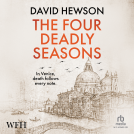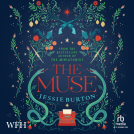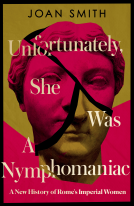
The Dublin Railway Murder
by Thomas Morris
This title was previously available on NetGalley and is now archived.
Send NetGalley books directly to your Kindle or Kindle app
1
To read on a Kindle or Kindle app, please add kindle@netgalley.com as an approved email address to receive files in your Amazon account. Click here for step-by-step instructions.
2
Also find your Kindle email address within your Amazon account, and enter it here.
Pub Date 11 Nov 2021 | Archive Date 11 Dec 2021
Random House UK, Vintage | Harvill Secker
Talking about this book? Use #TheDublinRailwayMurder #NetGalley. More hashtag tips!
Description
Dublin, November 1856.
George Little, the chief cashier of the Broadstone railway terminus, is found dead, lying in a pool of blood beneath his desk.
He has been savagely beaten, his head almost severed; there is no sign of a murder weapon, and the office door is locked, apparently from the inside. Thousands of pounds in gold and silver are left untouched at the scene of the crime.
Augustus Guy, Ireland’s most experienced detective, teams up with Dublin’s leading lawyer to investigate the murder. But the mystery defies all explanation, and two celebrated sleuths sent by Scotland Yard soon return to London, baffled.
Five suspects are arrested then released, with every step of the salacious case followed by the press, clamouring for answers. But then a local woman comes forward, claiming to know the murderer....
The Dublin Railway Murder is a thrilling and meticulously researched investigation into a real-life Victorian mystery.
This true-crime tale is perfect for readers who enjoyed The Five by Hallie Rubenhold, The Suspicions of Mr Whicher by Kate Summerscale and Mr Brigg’s Hat by Kate Colquhoun.
Marketing Plan
This high quality true-crime tale is brought to you by the author of the critically acclaimed The Matter of the Heart (Bodley Head, 2018).
Thomas Morris' background in radio production at BBC Radio 4 gives him an acute understanding of what makes a compelling story. The Dublin Railway Murder is a fascinating, in-depth investigation that reads like a mystery novel.
Morris spent months researching in the Irish National Archives in order to write this book. He unearthed a treasure trove of secret government documents and court transcripts that had lain undisturbed for years; these have enabled him to reveal a wealth of new detail and suspects in this extraordinary case.
Available Editions
| ISBN | 9781787302396 |
| PRICE | £14.99 (GBP) |
| PAGES | 400 |
Average rating from 131 members
Featured Reviews
 Hilary W, Reviewer
Hilary W, Reviewer
This is an analysis of a true historic crime of 1856: the time, place, politics and press reporting and the key characters who were seemingly involved. Morris has used both the extensive press reports of the time and the official documents of the investigation as this increasingly toxic Irish political situation could not be easily resolved. His ability to meld both facts and awareness of the people themselves make this a riveting read, with the added dimension of raising awareness of the complexities of a police investigation in Dublin where the powers that be were deeply distrusted by much of the Catholic and working class community, remembering that Ireland itself was “governed” by a largely absentee English MP with his own political agenda.
The murder took place at the Broadstone Railway terminus Dublin. This, with it it’s adjoining canal and rail workshops, was a hub of hundreds of employees and even more travellers. There was already a strong culture of pilfering stores and equipment here at Broadstone. But these new railways were becoming the centre of increasing press scrutiny in response to a number of international financial speculations and scams, so the murder of George Little, the Company’s recently appointed chief cashier, in the “locked room” of his office led to a major furore as first the scale of the theft that accompanied this death became clear and then the police seemed unable to catch the criminal involved.
Morris details the investigation that started belatedly when first the body was finally discovered nearly 24 hours after his killing and then it was realised his cut throat was not the first suggested suicide but a brutal murder. In the days before controlled crime scenes, modern investigative techniques, or proper forensic support and with Company and political intrusion, this was never going to be an easy case to solve, but Morris takes the reader through the process then and the difficulties. Various people are suspected, interviewed and cleared until months later the possible murderer is reported by his wife. However at that time a wife was not allowed give evidence against her spouse in court so a trial – demanded by the press and the situation - was always going to be difficult.
The trial is fully reported here and the defendant was found not guilty. Another bizarre tale then starts to unroll as he tries “to raise the passage money to emigrate” – first by public performances in Dublin and then later in England. In the latter place he meets a notorious phrenologist – who convinced of his guilt – is interested in models of his skull to support his hypothesis of a distinct and measureable “murderer’s” skull. But through this one can see a man who is descending into serious psychosis before finally “disappearing” from the historic record.
This is a deeply detailed book – and it is one of the important suites of crime reports that show so much more about the crime itself but also the social and economic backgrounds of all the people and places involved. Because the political and policing issues are so complex it can be a read that requires deep concentration at times – not least because so many people are involved in the place of the crime and a not inconsiderable number are lying to the police to hide vagaries of their own behaviours. But it turns out to be a real eye-opener around so many aspects of life in Dublin in the 1850s. But at the heart of it are people trying to live their normal lives (not always easy) who can be seen to emerge in increasing clarity, so it is well worth the read.
The Dublin Railway Murder by Thomas Morris is a gripping and well-researched book. Although based entirely on a true event, it had the verve and pace of the best sort of crime novel. I really liked the way Mr. Whicher popped up in the narrative but was defeated by the mystery surrounding the brutal crime. I loved it.
The Dublin Railway Murder by Thomas Morris is extremely well-written – no, it’s better than that. In November 1856, George Little, a clerk in a Dublin railway station, was brutally murdered at his desk in his locked office. The Irish police struggled to find the perpetrator. Scotland Yard sent out Detective Inspector Jack Whicher, but he had no success either. The police held and then released various people but only one suspect was tried in court. Although this was a true-life crime, Morris writes as well as any crime novelist and, to respect that, I shall give no spoilers.
The book is based upon the collection of government documents held in the National Archives of Ireland and newspaper reports. Morris points out differences between Irish law in the 1860s and British law of the 2020s. A husband and wife were deemed to be a single legal person (because a married woman has no separate legal existence during her marriage) and so a woman couldn’t give evidence against her husband, any more than she could sue herself. Because the government documents include interview transcripts and because reporters would scribble down dialogue in court to include in their newspaper reports, Morris is able to give us the actual words used by the players in this tragedy. It’s gripping, it really is.
#TheDublinRailwayMurder #NetGalley
Readers who liked this book also liked:
Catherine Merridale
General Fiction (Adult), Historical Fiction, Mystery & Thrillers


















